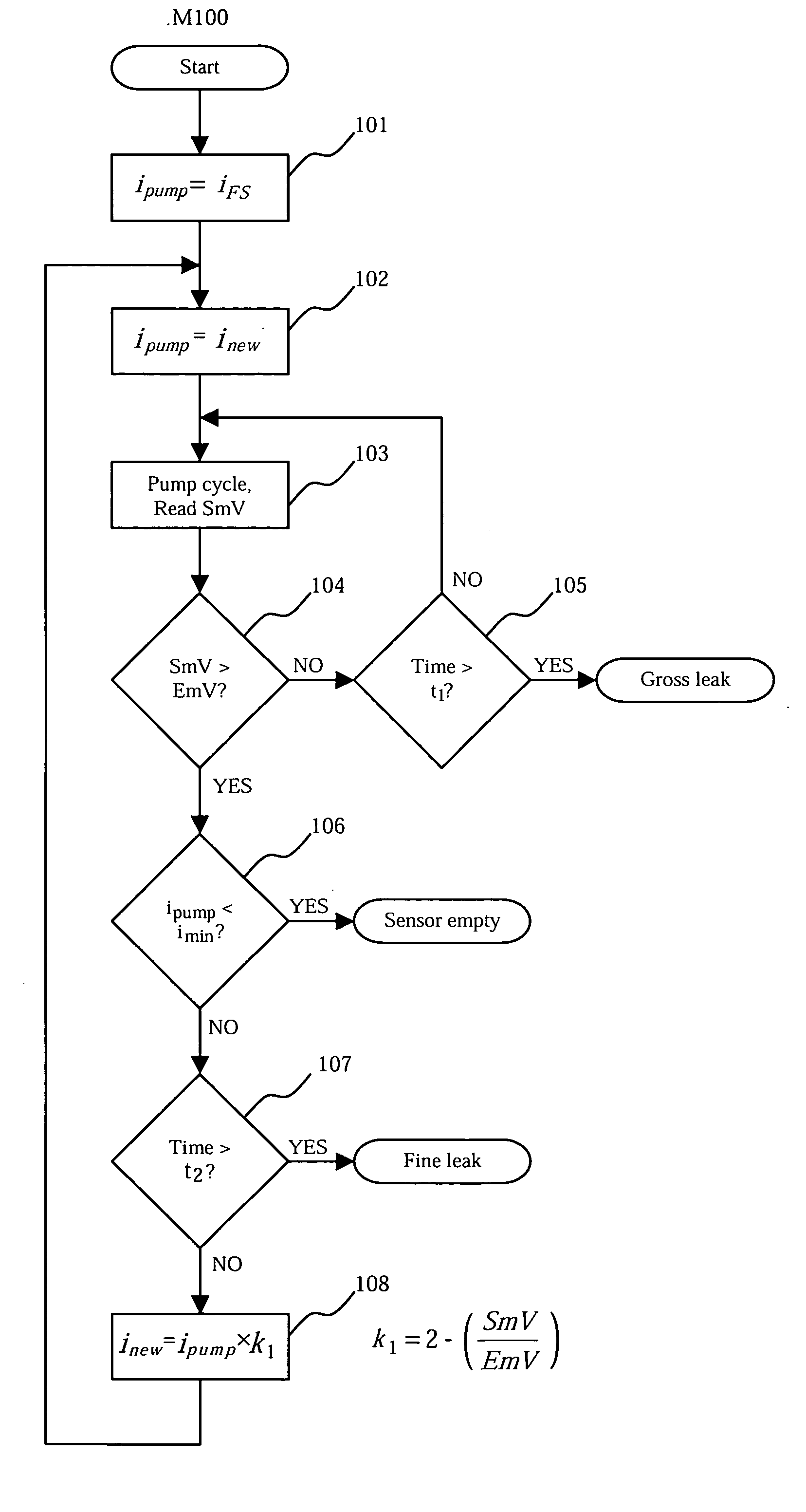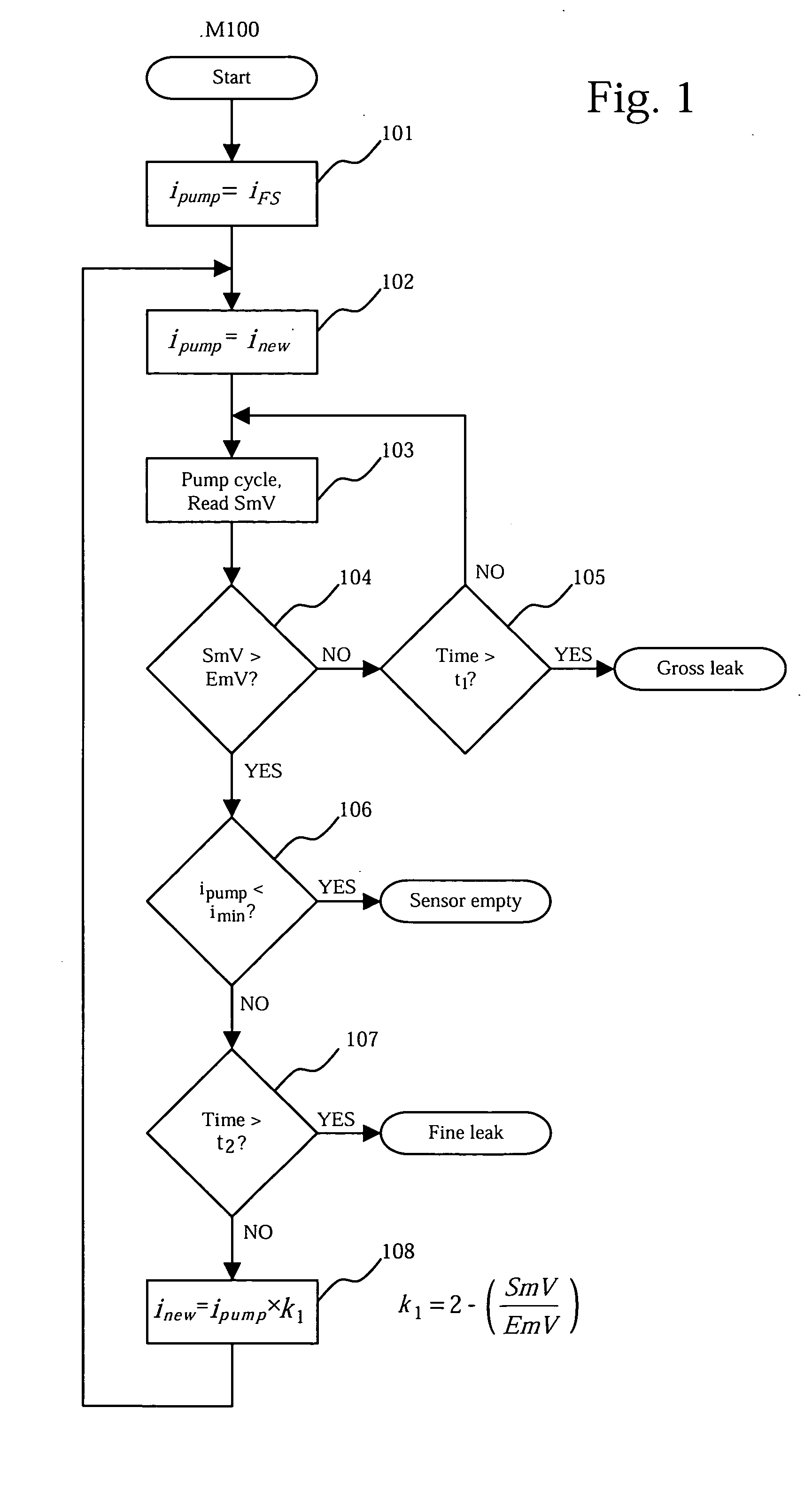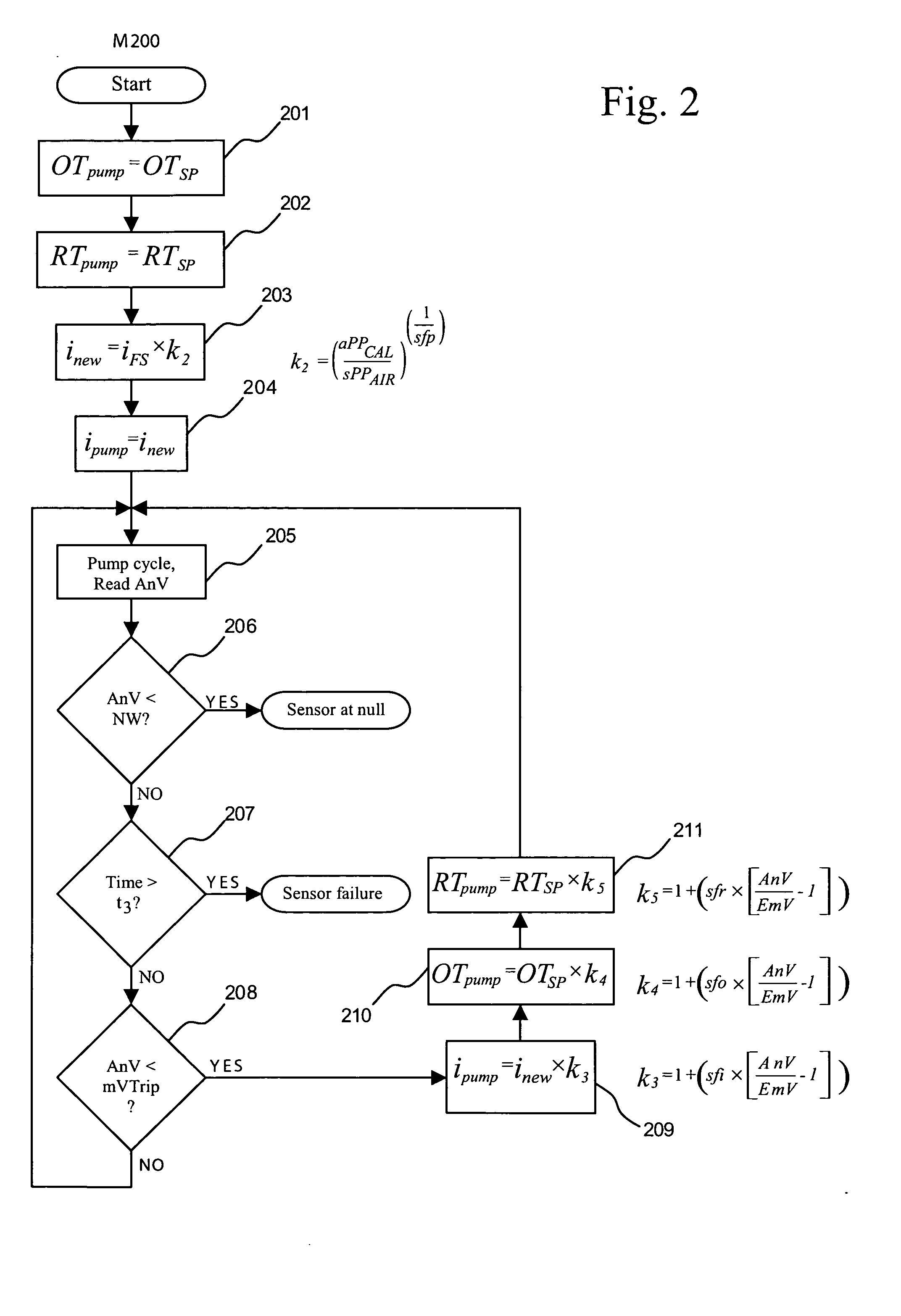Diagnostic and control methods for internally calibrated oxygen sensor
a technology of oxygen sensor and internal calibration, which is applied in the direction of liquid/fluent solid measurement, material electrochemical variables, instruments, etc., can solve the problems of sensor and sensor being considered to have fine physical leakage, and sensor being considered to have gross physical leakag
- Summary
- Abstract
- Description
- Claims
- Application Information
AI Technical Summary
Benefits of technology
Problems solved by technology
Method used
Image
Examples
Embodiment Construction
[0021]FIG. 1 shows a method for performing a simultaneous physical leak check and emptying of a sensor sealed reference chamber. In step 101 an intermediate calculation variable inew, is set to a first maximum value iFS, representing a fixed upper limit to the current available to pump the sensor internal reference chamber. More specifically, this value may represent the maximum design limit of a particular hardware circuit used to effect sensor pumping actions.
[0022] In step 102 ipump, the pump circuit magnitude control variable is initialized to the starting upper limit value inew. The value stored in ipump is passed to the control circuit 20 (FIG. 5) to effect the emptying of the internal reference chamber. Steps 103 through 105 comprise the internal reference chamber pump-out sub-loop, ELoop. Step 103 activates the sensor pumping mechanism within the control circuit 20 and queries the developing sensor output voltage. The DC current value ipump is latched into the control circu...
PUM
 Login to View More
Login to View More Abstract
Description
Claims
Application Information
 Login to View More
Login to View More - R&D
- Intellectual Property
- Life Sciences
- Materials
- Tech Scout
- Unparalleled Data Quality
- Higher Quality Content
- 60% Fewer Hallucinations
Browse by: Latest US Patents, China's latest patents, Technical Efficacy Thesaurus, Application Domain, Technology Topic, Popular Technical Reports.
© 2025 PatSnap. All rights reserved.Legal|Privacy policy|Modern Slavery Act Transparency Statement|Sitemap|About US| Contact US: help@patsnap.com



